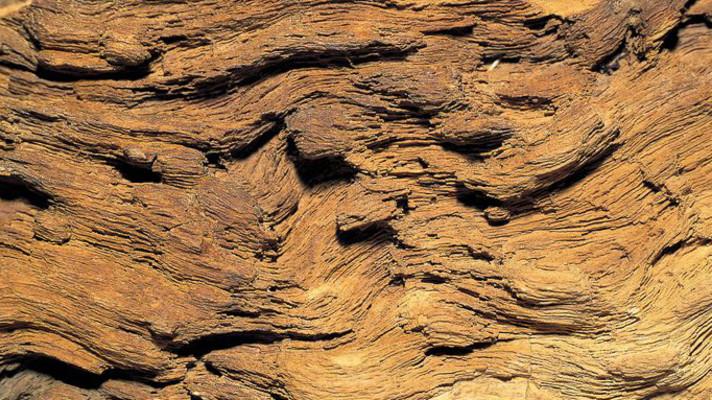Storing atmospheric carbon dioxide (CO2) has the potential to mitigate the impacts of changes in climate.
Carbon dioxide successfully stored in volcanic rock -- could help mitigate climate change
Researchers have now developed a way to inject CO2 into volcanic rock, and tested it in Iceland. Over 95% of the injected CO2 was mineralised (converted into a solid) within two years, instead of taking centuries or millennia as previously anticipated. The technique demonstrates potential for the permanent and safe storage of CO2 within basaltic rocks.
Carbon capture and storage (CCS) -- trapping emissions of CO2 and injecting them underground for storage -- is a potential way to reduce the impact of climate change. In the EU, the long-term security of CCS technology is ensured through rigorous monitoring until all available evidence indicates that the stored CO2 will be completely and permanently contained, in accordance with the CCS Directive1. Storage sites are thoroughly assessed before operations are permitted and they are monitored over long periods of time2 to ensure that CO2 is not leaking.
The CarbFix pilot project in Iceland is attempting to store CO2 in basaltic (volcanic) rocks, mirroring a natural process observed in volcanic geothermal systems. Storing CO2 in basaltic rock has advantages over conventional storage in deep saline aquifers (underground layers of rock containing saltwater) and depleted oil and gas reservoirs, which lack the minerals (such as calcium, magnesium and iron) required to form carbonate minerals, which fix CO2 into a solid form. Basaltic rocks are composed of up to 25% calcium, magnesium and iron and are also common, covering up to 10% of the Earth's surface as well as significant areas of the ocean floor.
Project scientists performed two injection tests at a site near the Hellisheidi geothermal power plant in Iceland. One test comprised 175 tons of pure CO2; the other comprised 73 tons of a CO2-H2S (hydrogen sulfide) gas mixture. The gas mixture was injected in order to test the feasibility of injecting impurities as part of the process; as the high cost of CCS comes largely from the cost of separating gases, using gas mixtures as opposed to pure CO2 may provide a substantial cost reduction.
The target depth for CO2 storage was between 400 and 800 metres within the rock. Due to the relatively shallow depth of this storage area and the risks of CO2 leakage through fractures in the rock, the researchers designed a novel gas-injection system, which dissolves the gases in water during the injection process. Dissolving the CO2 in water means it is no longer buoyant and does not escape back to the surface through the rock. Depths of more than 350 metres are required for this process in order to ensure sufficiently high pressures are reached to dissolve CO2 gas bubbles into the injected water.
As conventional monitoring techniques, such as seismic imaging, cannot detect mineralised CO2, the researchers also used a new method of monitoring the injected CO2. Chemical and isotopic tracers -- radioactive atoms or chemicals that can be used to track or measure the distribution of a substance -- were added to the gases to determine what happens to the CO2 after injection.
The tracers indicated that over 95% of the CO2 in both tests was mineralised in the rocks within two years of the injection. The researchers say that the relatively fast conversion of CO2 into carbonite minerals is due to four main factors: the novel injection system; the way basaltic rock readily dissolves to release calcium, magnesium and iron to enable the mineralisation of CO2; the mixing of injected water with alkaline; and the presence of existing carbon-based minerals, which may have helped to neutralise the injected CO2-rich water, which is acidic.
The conversion of CO2 into carbonate rock through mineralisation prevents future leakage of CO2, which reduces the amount of monitoring needed at the storage site (the researchers say that, once stored as a mineral, CO2 is immobilised for geological timescales). This added security, they say, should also help to gain public acceptance of the procedure. Although the technique requires substantial quantities of water and porous basaltic rocks to be used on a large scale, the researchers point out that these are widely available on US continental margins, with the largest storage potential in offshore areas such as mid-ocean ridges.
2. A minimum of 20 years before transfer of responsibility of the site from the operator to the competent authority and further minimum of 30 years post-transfer (see Articles 18 and 20 of the CCS Directive).
Source: Matter, J.M., Stute, M., Snaebjörnsdottir, S.Ó., Oelkers, E.H., Gislason, S.R., Aradottir, E.S., Sigfusson, B., Gunnarsson, I., Sigurdardottir, H., Gunnlaugsson, E., Axelsson, G., Alfredsson, H.A., Wolff-Boenisch, D., Mesfin, K., Fernandez de la Reguera Taya, D., Hall, J., Diferiksen, K. & Broecker, W.S. (2016). Rapid carbon mineralization for permanent disposal of anthropogenic carbon dioxide emissions. Science, 352(6291): 29-38. DOI: 10.1126/science.aad8132.
Contact: j.matter@southampton.ac.uk
Read more about: Climate change and energy, Environmental technologies, Sustainable consumption and production
